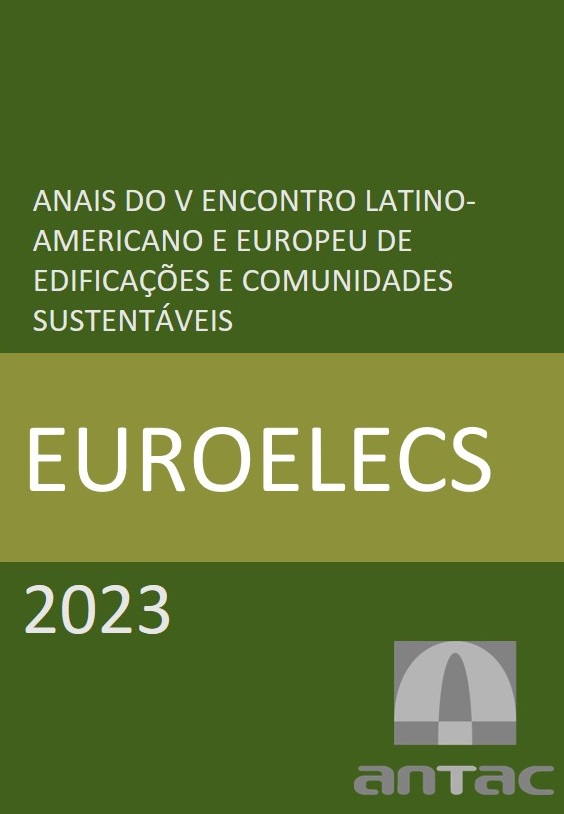Elementos naturais no espaço público e a promoção de Ambientes Restauradores
Palavras-chave:
ambientes restauradores, elementos naturais, espaço públicoResumo
Considerado o lugar do encontro, da convivência e de permitir a interação da vida coletiva, o espaço público é destinado à sociedade, além de poder ser utilizado como espaço de promoção da saúde para a população. Neste quesito, um tema de grande relevância são os chamados Ambientes Restauradores, apontados como locais capazes de restabelecer as capacidades psicofisiológicas dos indivíduos, entre elas a redução do estresse.
Este trabalho foi desenvolvido a partir da teoria de Roger Ulrich quanto aos Ambientes Restauradores com o objetivo de explorar a base teórica desses estudos e apontar a importância da composição de elementos naturais em espaços públicos como alternativa para a melhoria da qualidade de vida da população.
Foi realizada uma pesquisa bibliográfica com trabalhos que enfatizam a eficácia de ambientes compostos por elementos naturais e os benefícios dessa composição para a redução do estresse nos indivíduos. Com isto, pode-se perceber algumas características que podem ser inseridas nos espaços públicos para a possibilidade de que estes propiciem a sensação de restauração no ambiente urbano.
Como conclusão, observa-se a importância deste tema na conformação de ambientes mais saudáveis, porém, com a indicação de estudos posteriores com outras abordagens e teorias, ainda ressaltando a importância de se entender as características subjetivas dos usuários para uma melhor compreensão do que pode vir a ser restaurador ou não.
Referências
Abraham, A., Sommerhalder, K., & Abel, T. (2010). Landscape and well-being: A scoping study on the health-promoting impact of outdoor environments. International Journal of Public Health, 55(1), 59–69.
Del Duca, G. F, Rombaldi, A. J., Knuth, A. G., Azevedo, M. R., Nahas, M. V. & Hallal, P. C. (2009) Associação entre nível econômico e inatividade física em diferentes domínios. Revista Brasileira de Atividade Física e Saúde, 14(2), 123-131.
Felippe, M. L. (2015) Ambiente fisico e linguaggio ambientale nel processo di rigenerazione affettiva dallo stress in camere di degenza pediátrica. Tese (Doutorado em Tecnologia da Arquitetura), Università degli Studi di Ferrara, Ferrara, Itália, 2015.
Gomes, M. A. S., Silva, R. N., Silva, J. C. S. & Silva, T. G. F. (2012) Caracterização e análise dos espaços públicos da cidade de Arapiraca – AL – Brasil. Ateliê Geográfico, Goiás, v.6, n.4, pp. 137 – 157.
Gressler, S. C. & Günther, I. A. (2013). Ambientes Restauradores: definição, histórico, abordagens e pesquisas. Estudos de psicologia, 18(3), jul/set, 487-495.
Hartig, T., Mang, M., & Evans, G. W. (1991). Restorative effects of natural environment experience. Environment and Behavior, 23, 3–26
Jacobs, J. (2009). Morte e vida das grandes cidades. 2º Ed. São Paulo: Editora WMF Martins Fontes. (Trabalho original publicado em 1961)
Kaplan, R. & Kaplan, S. (1989). The experience of nature: a psychological perspective. New York, Cambbridge University Press.
Kort, Y. A. W., Meijndres , A. L., Sponselee A. A. G. & IJsselsteinjn, W. A. (2006). What’s wrong with virtual trees? Restoring from stress in a mediated environment. Journal of Environmental Psychology, 26. 309-320.
Lamas, J. M. R.G. (s/d) Morfologia urbana e desenho da cidade. Fundação Calouste Gulbenkian e Junta Nacional de Investigação Científica e Tecnológica.
Queiroga, E. (2011). Notas gerais sobre os sistemas de espaços livres da cidade brasileira. In: Campos, A. C., Queiroga, E. F., Galender, F., Degreas, H. N., Akamine, R., Macedo, S. S. & Custódio, V. (Org.). : Sistemas de espaços livres. Conceitos, conflitos e paisagens. São Paulo: Fau/USP, 11-31.
Sousa, A. L; Medeiros, J. S; Albuquerque, D. S & Higuchi, M. I. G. (2015). Parque verde urbano como espaço de desenvolvimento psicossocial e sensibilização socioambiental. Psico, 46(3), 301-310.
Souza, A. P. (2009). Análise da qualidade ambiental urbana em praças públicas através da percepção dos seus usuários: o caso da Praça Dois de Julho – Campo Grande – Salvador – Bahia [Dissertação de Mestrado em Engenharia Ambiental Urbana – Escola Politécnica, Universidade Federal da Bahia]
Twedt, E; Rainey, R. M & Proffitt D. R. (2019). Beyond nature: the rolae of visual appeal and individual diferences in perceived restorative potential. Journal of Environmental Psychology, 65, 1-11.
Ulrich, R. S. (1999) Effects of gardens on health outcomes: theory and research. In. C. Cooper Marcus & M, Barnes (Orgs.), Healing gardens: therapeutic benefits and design recommendations (p. 27-86). New York: John Wiley & Sons.
Ulrich, R. S. (1984) View through a Window may influence recovery from surgery Science, New series, Volume 224, Issue 4667 (Apr. 1984), 420-421.
Ulrich, R. S., Simons, R. F., Losito, B. D., Fioritom, E., Miles, M. A., & Zelson, M. (1991). Stress recovery during exposure to natural and urban environments. Journal of Environmental Psychology, 11(3), 201-230.
Van den Berg, A., Koole, S. & Van der Wulp, N. (2003). Environmental preference and restoration: (How) are they related? Journal of Environmental Psychology 23, 135–146.
Weber, A. M. & Trojan, J. (2018) The restorative value of the urban environment: A systematic review of the existing literature. Environmental Health Insights, 12.

